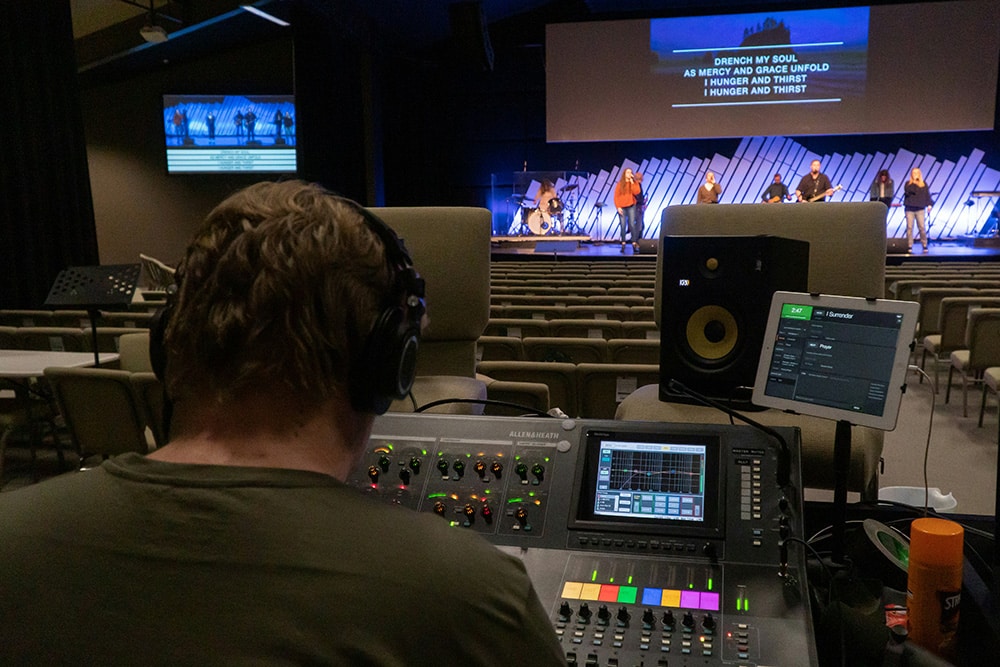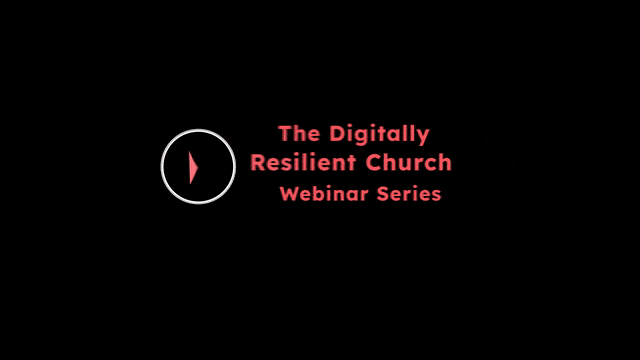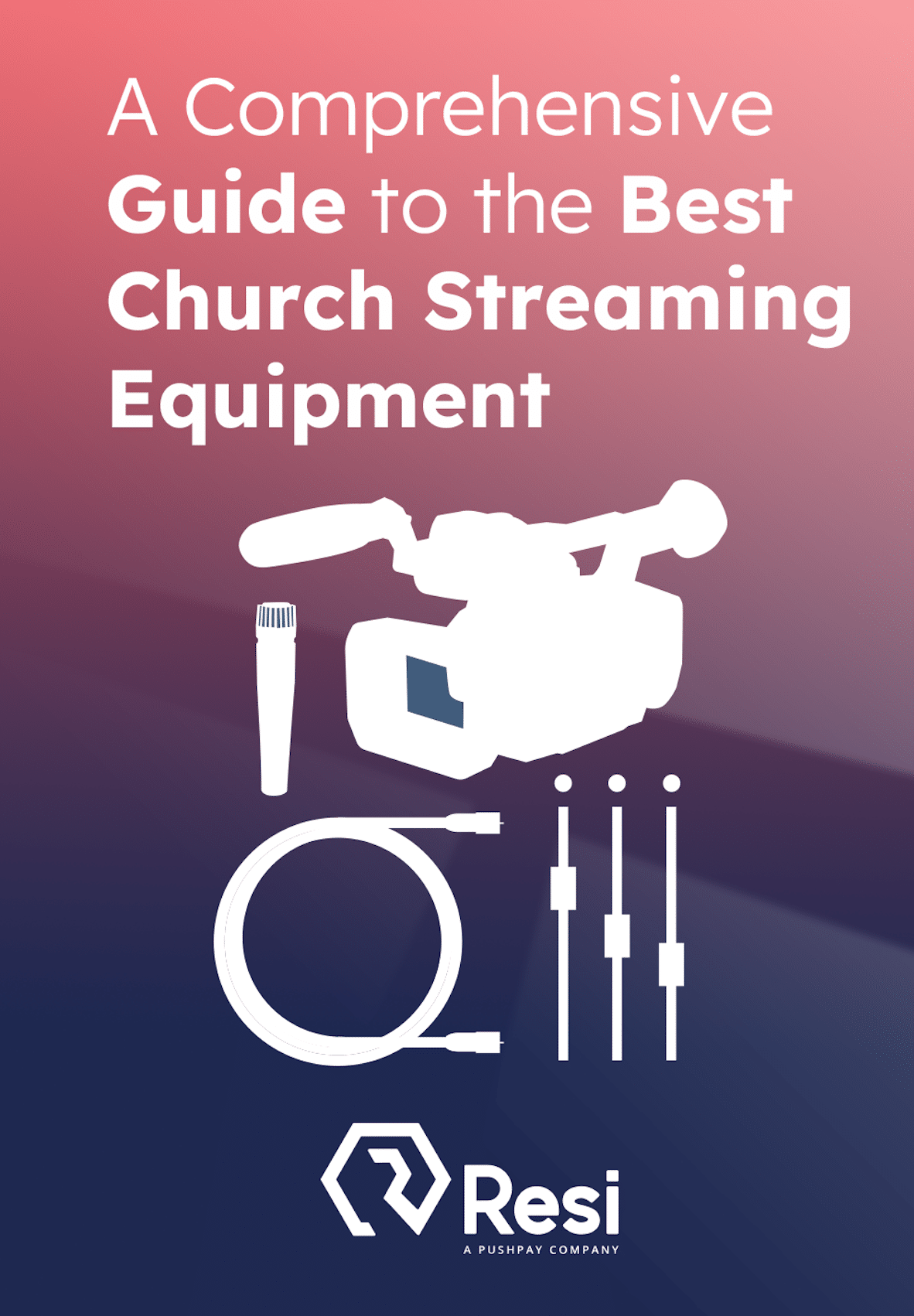
You’ve got your encoder configured, your RTMP keys copied into place, and your stream destinations lined up—website, Facebook, YouTube, maybe a satellite campus or two. On paper, it looks straightforward. But then Sunday morning arrives, and one platform buffers while another drops entirely. Your team scrambles to troubleshoot, but viewers are already tuning out. The message you worked so hard to produce is reaching some people beautifully and others not at all.
If you’re streaming to multiple destinations, you’ve probably lived this nightmare. And if you’re still relying solely on RTMP to handle that distribution, you’re working with a protocol that was never designed for the job you’re asking it to do.
Here’s the reality: multi-destination streaming demands more than basic RTMP can deliver. It requires infrastructure built specifically for reliability, scalability, and the high stakes of reaching audiences across multiple platforms simultaneously. Let’s dig into why—and what actually works when everything’s on the line.
What Is Multi-Destination Streaming?
Multi-destination streaming is exactly what it sounds like: broadcasting your live video to multiple platforms or physical locations at the same time. You’re not just hitting “Go Live” on Facebook—you’re sending that same stream to your website, YouTube, a mobile app, and maybe two or three satellite campuses that depend on you for their service feed.
This isn’t a nice-to-have anymore. It’s table stakes for organizations serious about reach:
- Churches stream to their website, multiple social platforms, and often to overflow rooms or remote campuses where members gather to watch together.
- Schools broadcast board meetings, sporting events, and graduation ceremonies to parents, community members, and multiple campus locations simultaneously.
- Event organizers deliver content to in-person audiences at satellite venues while simultaneously streaming to online viewers across several platforms.
The expectation from your audience is simple: they want to watch where they are, whether that’s scrolling Facebook during lunch, checking your website from their laptop, or sitting in a satellite campus watching on a big screen. You don’t get to pick where they show up—you need to be there, reliably, every time.
That reliability is where things get complicated. When you’re streaming to one destination, you’re managing one point of failure. When you’re streaming to five, ten, or fifteen destinations? Every connection becomes a potential breaking point. And traditional RTMP wasn’t built to handle that pressure.
The RTMP Foundation: Understanding the Basics
RTMP—Real-Time Messaging Protocol—has been the workhorse of live streaming for years, and for good reason. Originally developed by Adobe, it became the de facto standard because it works with virtually every major streaming platform. Facebook, YouTube, Twitch, Vimeo—they all accept RTMP streams. That universal compatibility made it the obvious choice for anyone getting started with live streaming.
The RTMP protocol works through a straightforward process: your encoder packages your video and audio data, then pushes it through an internet connection to a streaming platform’s ingest server. The platform receives that data, processes it, and distributes it to viewers. Simple, efficient, battle-tested.
For single-destination streaming, RTMP does the job well. You set up your stream key, your encoder sends the data, and viewers watch. Millions of successful streams have been delivered this way.
But here’s the problem: RTMP was designed for point-to-point transmission. One encoder sending to one destination. When you start multiplying that connection—sending from your encoder to Facebook AND YouTube AND your website AND satellite campuses—you’re stretching RTMP beyond its original design parameters. Each destination requires its own RTMP connection, its own bandwidth allocation, and its own management overhead.
And when things go wrong—when packet loss hits your network or your internet connection stutters—RTMP has no built-in resilience. It just fails. And if you’re streaming to multiple destinations via separate RTMP connections, they all fail together or create wildly inconsistent experiences across platforms.
That’s not a hypothetical. That’s what happens when you try to build mission-critical multi-destination streaming on a protocol that was never engineered for it.
The Hidden Costs of RTMP-Only Multi-Destination Streaming
The price of relying exclusively on RTMP for multi-destination streaming isn’t always obvious in your budget line items. It shows up in technical debt, viewer experience, and the stress levels of your production team.
Network Vulnerability
RTMP offers zero protection against network instability. When packet loss occurs—and it will, because internet connections aren’t perfect—every destination streaming via RTMP feels the impact. Your stream stutters on Facebook, freezes on YouTube, and drops entirely on your website. All at once.
Picture this: It’s the final point of your lead pastor’s sermon. Your internet connection hiccups for three seconds. Viewers watching via RTMP streams see buffering wheels, audio cutting in and out, maybe a complete disconnect requiring them to reload the page. The moment is lost. The message is interrupted. And your inbox fills with messages from frustrated viewers who thought something was wrong with their own connection.
The fundamental issue is that RTMP has no error correction built into the protocol. When data packets fail to arrive, RTMP can’t recover them. It can’t adapt. It just keeps trying to push data through the same compromised connection, hoping things improve. For one destination, this is manageable—annoying, but manageable. For multiple destinations, it compounds into chaos.
Resource Drain
Every RTMP destination requires its own separate stream from your encoder. That means if you’re streaming to five destinations, your encoder is essentially producing five parallel streams. This creates three major resource problems:
CPU overhead: Your encoder’s processor is working five times harder than it would for a single stream. Consumer-grade encoders buckle under this load. You start seeing dropped frames, encoding artifacts, and system instability—all because you’re asking one box to do the work of five.
Bandwidth multiplication: Each RTMP connection demands its own upload bandwidth. If you’re sending a 1080p stream at 6 Mbps to five destinations, you need 30 Mbps of sustained upload capacity. Most internet connections can’t reliably deliver that, especially when other traffic is competing for bandwidth. The result? At least one of your destinations is starving for data while the others compete.
Hardware limitations: Organizations often start with affordable hardware encoders, then discover those encoders weren’t designed for simultaneous multi-destination streaming. The streaming hardware encoders that handle this workload reliably come with features like redundant power supplies, server-grade components, and architecture built specifically for high-output scenarios. Basic RTMP encoders trying to serve multiple destinations are operating outside their design specifications.
Quality Inconsistencies
Not all streaming platforms handle RTMP the same way. Facebook’s ingest servers have different requirements than YouTube’s. Your website might accept a different bitrate than your mobile app. When you’re managing separate RTMP connections to each destination, you’re essentially running multiple parallel experiments in video delivery—and hoping they all work simultaneously.
The result? Wildly inconsistent viewer experiences. Facebook might deliver crystal-clear video while YouTube stutters and rebuffers. Viewers on your website see perfect quality while those on mobile apps struggle with constant buffering. Each platform becomes its own troubleshooting puzzle, and there’s no unified quality control.
This inconsistency doesn’t just frustrate viewers—it undermines trust. When people watch your stream and experience problems, they don’t blame their platform or their internet connection. They blame you. The organization that couldn’t deliver a smooth experience becomes the organization they’re less likely to engage with next time.
Management Complexity
Multi-destination RTMP streaming requires manual setup for each destination. That means:
- Logging into each platform to retrieve stream keys
- Configuring each destination in your encoder individually
- Testing each connection separately before going live
- Monitoring multiple platform dashboards during your broadcast
- Troubleshooting each destination independently when problems occur
When something goes wrong—and with enough moving parts, something eventually will—your team faces a diagnostic nightmare. Is Facebook down? Is YouTube rejecting your bitrate? Is your website’s ingest server misconfigured? Is one destination consuming so much CPU that it’s causing encoding problems affecting all the others?
There’s no centralized monitoring, no unified control panel, no way to understand at a glance whether your multi-destination stream is healthy or failing. You’re managing complexity that scales exponentially with each destination you add.
This is the hidden cost: the hours of setup time, the Sunday morning scrambles, the viewer complaints, and the nagging anxiety that comes from knowing your streaming infrastructure is held together with digital duct tape.
What True Multi-Destination Streaming Requires
If basic RTMP isn’t up to the task, what is? True multi-destination streaming—the kind that works reliably when everything’s on the line—requires infrastructure built specifically for resilience, efficiency, and scale.
Resilient Protocol Architecture
The fundamental shift happens at the protocol level. Instead of using RTMP everywhere, organizations serious about reliability use protocols engineered specifically to survive network disruptions.
Resi’s Resilient Streaming Protocol changes the game by building error correction and adaptive streaming directly into the transmission layer. When packet loss occurs—and it will—resilient protocols can detect the issue, request retransmission of lost data, and maintain stream quality without visible interruption to viewers.
The practical difference is profound. An RTMP connection that experiences packet loss will stutter, buffer, or disconnect entirely. A resilient protocol experiencing the same network conditions absorbs the disruption, recovers the lost data, and delivers smooth video to viewers who never know there was a problem.
This isn’t theoretical. In real-world deployments, streams using resilient protocols have maintained flawless delivery through network conditions that would have destroyed traditional RTMP connections. When your internet connection drops for two seconds, the resilient protocol bridges that gap using buffered data and forward error correction. When packet loss spikes to 5%, the protocol compensates. Your viewers keep watching without interruption.
For multi-destination streaming, this resilience multiplies. Instead of every destination experiencing the same network failure simultaneously, the intelligent protocol layer ensures consistent quality across all platforms regardless of momentary connection issues.
Intelligent Encoding
The encoder is where your content gets packaged for delivery, and choosing the right hardware makes the difference between struggling with multi-destination streaming and handling it effortlessly.
Professional encoders designed for multi-destination workflows include features that basic RTMP encoders simply lack:
Hardware-accelerated processing: Server-grade encoders use dedicated chips for video encoding, removing the CPU bottleneck that cripples consumer devices trying to generate multiple simultaneous streams.
Preset management: Advanced encoders can store and apply different encoding settings for different destination types—one preset optimized for social media, another for satellite campuses requiring broadcast quality, another for mobile-optimized streams. This ensures each destination receives appropriately configured video without manual adjustment.
Redundant systems: When you’re streaming to multiple destinations simultaneously, hardware failure isn’t acceptable. Professional encoders include redundant power supplies, advanced cooling systems, and enterprise-grade components that won’t fail during your most important broadcast.
The practical impact? A properly configured professional encoder can handle 10+ simultaneous destinations without breaking a sweat, while maintaining consistent quality across all outputs and providing headroom for future expansion.
Centralized Stream Management
The smartest multi-destination streaming architectures don’t ask your encoder to directly manage every connection. Instead, they use a hub-and-spoke model: your encoder sends one high-quality stream to a central distribution point, and that platform handles the distribution to all your destinations.
This approach offers several critical advantages:
Bandwidth efficiency: You only need upload bandwidth for one stream instead of five, ten, or fifteen. Your encoder sends a single 6 Mbps stream to the cloud, and the cloud platform distributes it to all your destinations.
Platform-specific optimization: Cloud transcoding can automatically adjust your stream for each platform’s specific requirements. Facebook gets optimized Facebook settings, YouTube gets YouTube settings, and your website receives appropriately configured streams—all generated from your single source upload.
Unified monitoring: One dashboard shows the health of all your destination streams simultaneously. Instead of checking ten different platform analytics, you see everything in one place: which destinations are active, what quality they’re receiving, where any issues might be occurring.
The multiple destinations approach transforms multi-destination streaming from a complex technical challenge into a simple workflow: configure your destinations once, start your stream, and let the infrastructure handle distribution automatically.
The Resi Approach to Multi-Destination Streaming
The problems we’ve outlined aren’t hypothetical—they’re the real challenges that led our team to build Resi’s platform from the ground up for multi-venue, multi-platform delivery.
When you’re serving thousands of churches, schools, and organizations that depend on flawless streaming for their mission-critical communication, “usually works” isn’t good enough. These teams need streaming that works every time, regardless of how many destinations they’re reaching or what network conditions they’re facing.
That’s why Resi’s approach to multi-destination streaming centers on a few core principles:
Resilient Streaming Protocol as the foundation: Instead of building on RTMP and hoping for the best, Resi developed RSP specifically to handle the network instability that destroys traditional streams. When your internet connection experiences packet loss, RSP compensates automatically. When connectivity drops momentarily, RSP bridges the gap. The result? Streams that survive conditions that would kill RTMP-based broadcasts.
Hardware engineered for the workload: Resi’s encoders are designed specifically for reliable multi-destination streaming. They include the processing power, the cooling systems, the redundant components, and the architecture needed to deliver flawless video to numerous destinations simultaneously without the CPU overhead that cripples consumer-grade hardware.
Cloud infrastructure that handles distribution: Your encoder sends one stream to Resi Studio, and Resi handles the complexity of distributing to all your destinations. Want to stream to your website, Facebook, YouTube, Vimeo, a mobile app, and three satellite campuses? Configure those destinations once, and Resi’s infrastructure manages the distribution, transcoding, and optimization for each platform automatically.
Proven at scale: This isn’t experimental technology. Organizations are currently using Resi to stream simultaneously to any destination with zero quality degradation and complete reliability. When a major church needs to deliver the same service to multiple campuses while also streaming to several social platforms and their website—all in perfect sync, all with broadcast-quality video—they trust Resi to make it happen.
The peace of mind factor here is significant. Technical directors running Resi don’t spend their Sunday mornings refreshing five different platform dashboards and hoping everything stays connected. They focus on production—camera work, transitions, audio mixing—while the streaming infrastructure handles itself. When the service ends, they shut down the encoder and walk away, confident that every destination received the full broadcast without issue.
Practical Implementation: Building a Reliable Multi-Destination Strategy
Understanding what multi-destination streaming requires is one thing. Actually building that infrastructure for your organization is another. Here’s how to approach it systematically.
Assessment Phase
Start by mapping your actual needs, not your aspirations. Where are you currently streaming, and where do you realistically need to reach in the next 12 months?
Destination inventory: List every platform and location you currently stream to, plus any you’re planning to add. Include social media channels, website embeds, mobile apps, satellite campuses, overflow rooms, and any other viewing locations.
Bandwidth reality check: Measure your actual upload bandwidth, not what your ISP promises. Run tests during the times you’ll be streaming, when network traffic is highest. If you’re planning to stream 1080p at 6 Mbps to multiple destinations via traditional RTMP, do the math: five destinations require 30 Mbps of sustained upload. Does your connection deliver that reliably?
Hardware capabilities audit: What encoder are you currently using? Check its specifications for simultaneous output limits, processing capabilities, and whether it was designed for the workload you’re demanding. If you’re using a consumer-grade encoder to serve six destinations, you’ve already identified a bottleneck.
Infrastructure Setup
With your assessment complete, build the infrastructure to match your actual requirements:
Encoder selection: Choose hardware appropriate for your destination count and quality expectations. For organizations streaming to multiple destinations with broadcast-quality requirements, server-grade encoders with redundant systems and advanced processing capabilities are worth the investment. For more modest needs, even portable encoders like the Mini Encoder can handle several destinations reliably when paired with the right platform infrastructure.
Network configuration: Ensure your encoder has dedicated bandwidth, not shared with office computers and conference room Zoom calls. Set up Quality of Service (QoS) rules on your network to prioritize streaming traffic. If your building has multiple internet connections, configure your streaming infrastructure to use the most reliable one—or set up automatic failover between connections.
Backup internet planning: Streaming to multiple destinations means multiple constituencies depend on your reliability. Don’t leave yourself vulnerable to single-connection failure. Whether it’s a secondary ISP, a cellular backup, or a bonded connection solution, having a backup that can engage automatically protects everyone counting on your stream.
Platform Integration
Once your infrastructure is in place, connect to your destinations strategically:
Social media setup: Configure each platform’s stream keys and settings through your encoder or streaming platform. Take time to optimize each platform’s specific requirements—Facebook, YouTube, and other services have different preferences for bitrate, resolution, and keyframe intervals.
Website embedding: Choose an embedding strategy that prioritizes viewer experience. Whether you’re using a third-party player or building your own, ensure your website viewers receive quality comparable to what social media platforms deliver.
Satellite campus integration: For physical locations depending on your stream, prioritize reliability over everything else. These viewers can’t switch to another platform if your stream fails—they’re counting on you to deliver. Ensure campus locations have the infrastructure to receive and display your stream reliably.
Testing and Optimization
Don’t wait for your biggest broadcast to discover where your multi-destination setup breaks:
Load testing: Before going live with multiple destinations, test your complete setup under real conditions. Stream simultaneously to all your destinations for at least an hour and monitor performance closely. Watch CPU usage on your encoder, check for any quality degradation across destinations, and verify that all platforms receive consistent quality.
Monitoring implementation: Set up dashboards or monitoring tools that show the health of all your destinations in real-time during broadcasts. You need immediate visibility into which destinations are active, what quality they’re receiving, and where any issues might be developing.
Analytics review: After each multi-destination broadcast, review the data. Which destinations saw the most engagement? Where did viewers drop off? Were there quality issues viewers experienced that didn’t trigger your alerts? Use this information to continuously improve your setup.
The goal isn’t perfection on day one—it’s building a system that gets more reliable and efficient with each broadcast. Organizations that take multi-destination streaming seriously treat it as an evolving infrastructure, not a one-time setup.
Conclusion
RTMP laid the foundation for live streaming. It made multi-platform delivery possible when nothing else did, and it deserves credit for that. But if you’re building mission-critical multi-destination streaming on basic RTMP today, you’re building on a foundation that was never engineered for the load you’re placing on it.
Your message—whether it’s a church service that connects congregations across multiple campuses, a school event that brings community members together regardless of location, or any content that deserves reliable delivery—is too important to leave vulnerable to network instability and protocol limitations.
Multi-destination streaming done right requires protocols built for resilience, encoders designed for the workload, and infrastructure that handles distribution intelligently. It requires planning for failure so that failure never impacts your viewers. It requires choosing tools built specifically for the job you’re asking them to do.
With Resi’s platform, multi-destination streaming becomes what it should be: simple to manage, reliable under any conditions, and scalable as your needs grow. Thousands of organizations trust Resi to deliver their content to multiple destinations flawlessly because the technology was built from the ground up for exactly this challenge.
Ready to discover how Resi handles multi-destination streaming with unprecedented reliability? See the platform built specifically for organizations that can’t afford to fail. Explore Resi’s live streaming solutions.







